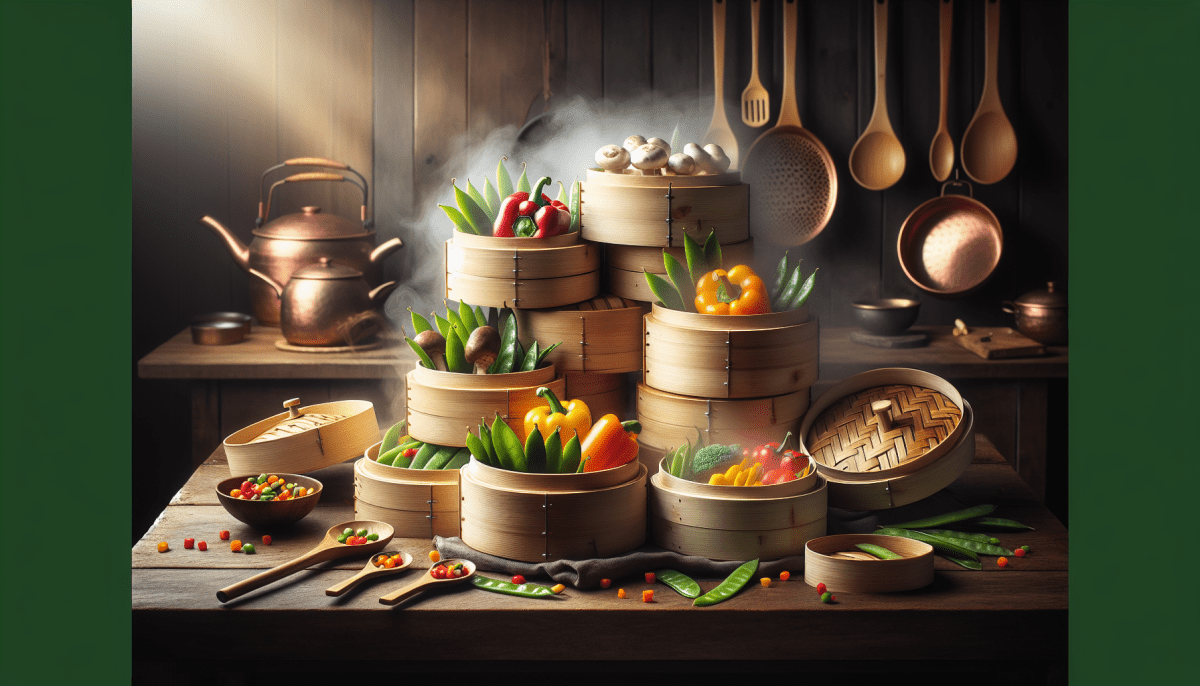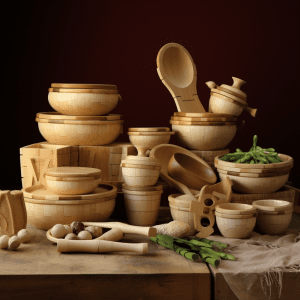Bamboo cookware has been gaining popularity in kitchens around the world, and for good reason. This versatile material offers numerous benefits for cooking enthusiasts looking for a sustainable and eco-friendly alternative to traditional cookware.
Firstly, bamboo cookware is known for its exceptional durability. Bamboo is naturally resistant to scratches and stains, making it a long-lasting option that can withstand daily use. Its strength also makes it suitable for high-temperature cooking, giving chefs confidence in its performance.
Furthermore, bamboo cookware boasts excellent heat distribution properties. It evenly distributes heat across the entire surface, ensuring that your food is cooked evenly without hotspots or burning. This makes bamboo cookware an ideal choice for delicate dishes that require precise and gentle heat control.
In addition to its functional advantages, bamboo cookware is also highly sustainable. Bamboo is a renewable resource that grows rapidly, requiring no replanting, pesticides, or fertilizers. This makes it an environmentally friendly option compared to cookware made from metals or plastics, which contribute to resource depletion and pollution.
With its durability, excellent heat distribution, and eco-friendly nature, bamboo cookware is truly winning hearts in kitchens worldwide. From bamboo cutting boards to steamers and utensils, this versatile material offers a range of options for culinary enthusiasts who prioritize sustainability without compromising on quality or performance.
Unlocking the Secrets: How to Properly Season Bamboo Cookware
Bamboo cookware has gained increasing popularity in recent years due to its eco-friendly nature, durability, and ability to impart a unique flavor to dishes. To fully harness the potential of bamboo cookware, it is essential to properly season it before use. Seasoning not only enhances its performance but also extends its lifespan. Here, we reveal the secrets to unlocking the full potential of your bamboo cookware.
Step 1: Preparing Your Bamboo Cookware
Before seasoning the bamboo cookware, give it a thorough cleaning with warm soapy water to remove any dirt or debris. Rinse it thoroughly and pat it dry with a clean cloth. This step ensures that your cookware is clean and ready for the seasoning process.
Step 2: Applying the Seasoning
After drying the cookware, it's time to apply the seasoning. Use a food-safe oil, such as coconut oil or flaxseed oil, to create a protective layer on the bamboo surface. Apply a thin layer of oil using a clean cloth or brush, making sure to cover the entire surface of the cookware, including the interior and exterior.
Step 3: Heat and Repeat
Once the oil is applied, heat the bamboo cookware gradually. Start with low heat for a few minutes, gradually increasing it to medium-high. Heat helps the oil penetrate the bamboo fibers, forming a protective barrier. Repeat this process of heating and cooling at least three to four times, allowing the oil to soak in and enhance the bamboo's natural moisture resistance. This repetitive process guarantees a well-seasoned bamboo cookware that will perform optimally for years to come.
From Stir-Frying to Steaming: Bamboo Cookware for Every Technique
The use of bamboo cookware has become increasingly popular in recent years, as people are recognizing the benefits it offers in terms of both health and sustainability. This versatile material is not only lightweight and durable, but it also has excellent heat retention properties, making it perfect for various cooking techniques. Whether you prefer stir-frying, steaming, or any other cooking method, there is a bamboo cookware option to suit your needs.
For stir-frying enthusiasts, a bamboo wok is an excellent choice. Compared to traditional metal woks, bamboo woks provide a more natural and eco-friendly option. They distribute heat evenly, allowing for quick and efficient cooking. Additionally, the non-stick surface of bamboo woks helps to reduce the amount of oil needed, resulting in healthier and more flavorful dishes. With proper care and maintenance, a bamboo wok can last for years, making it a worthwhile investment for any kitchen.
Those who prefer steaming can benefit from bamboo steamers. These multi-layered vessels are designed to fit snugly on top of a pot or wok, allowing steam to circulate and cook food gently. Bamboo steamers are particularly popular for preparing dim sum, dumplings, and other delicate dishes. The natural bamboo material absorbs excess moisture during steaming, preventing food from becoming overly soggy. Moreover, the light and natural aroma of bamboo can add a subtle flavor and fragrance to the steamed dishes, enhancing the overall dining experience.
Five Essential Tips to Extend the Lifespan of Your Bamboo Cookware
1. Proper Cleaning: One crucial tip to prolong the lifespan of your bamboo cookware is to clean it properly. Avoid using harsh detergents or abrasive scrubbers, as they can damage the delicate bamboo fibers. Instead, gently hand wash your bamboo cookware using warm water and mild soap. Rinse thoroughly and air-dry completely before storing. This will prevent bacterial growth, staining, and warping, ensuring your cookware stays in excellent condition for longer.
2. Seasoning: Just like cast iron cookware, bamboo cookware can benefit from seasoning. To do this, apply a thin layer of food-safe oil, such as coconut or mineral oil, to the entire surface of your bamboo cookware. Rub the oil in with a soft cloth, making sure to coat both the inside and outside. Let it sit for a few hours or overnight to allow the oil to soak in. Seasoning creates a protective barrier, preventing moisture from seeping into the bamboo and reducing the likelihood of cracking or splitting.
3. Avoid High Temperatures: Bamboo is a natural material that is susceptible to heat damage. To extend the lifespan of your bamboo cookware, avoid exposing it to high temperatures, such as placing it directly on a stovetop burner or using it in an oven. Instead, use your bamboo cookware for serving, stirring, or mixing ingredients at room temperature or low to medium heat. This will prevent the bamboo fibers from drying out, becoming brittle, and ultimately breaking.
4. Keep Away from Excessive Moisture: Bamboo cookware should be kept away from excessive moisture to prevent it from absorbing water and becoming vulnerable to mold or mildew growth. After cleaning, ensure your bamboo cookware is completely dry before storing it. Additionally, avoid soaking it for long periods and never leave it submerged in water. To further safeguard against moisture damage, store your bamboo cookware in a well-ventilated area where it can breathe.
5. Regular Maintenance: Implementing regular maintenance practices will help extend the lifespan of your bamboo cookware. Inspect your cookware frequently for any signs of wear, such as cracks, splinters, or discoloration. If you notice any damage, take immediate steps to address it, such as sanding rough surfaces or applying a fresh coat of food-safe oil. By proactively maintaining your bamboo cookware, you can ensure its longevity and continue to enjoy the natural beauty and functionality it offers.
Remember, properly caring for your bamboo cookware will not only prolong its lifespan but also ensure safe and enjoyable cooking experiences for years to come.
4.38 out of 5 starsBamboo Cookware
Sustainable and Stylish Cookware to Elevate Your Kitchen Experience
Product information
Product Review Score
Product links



